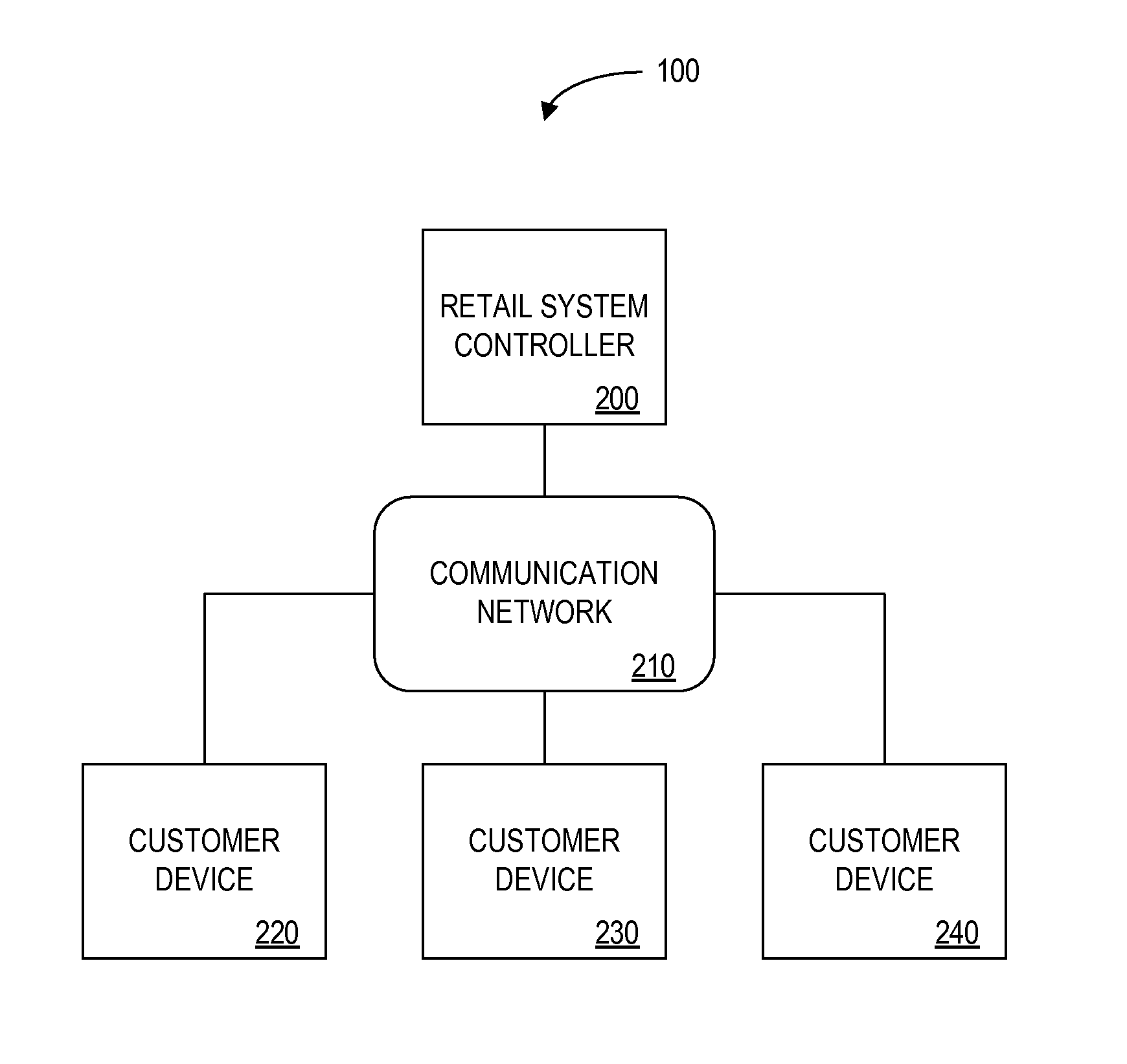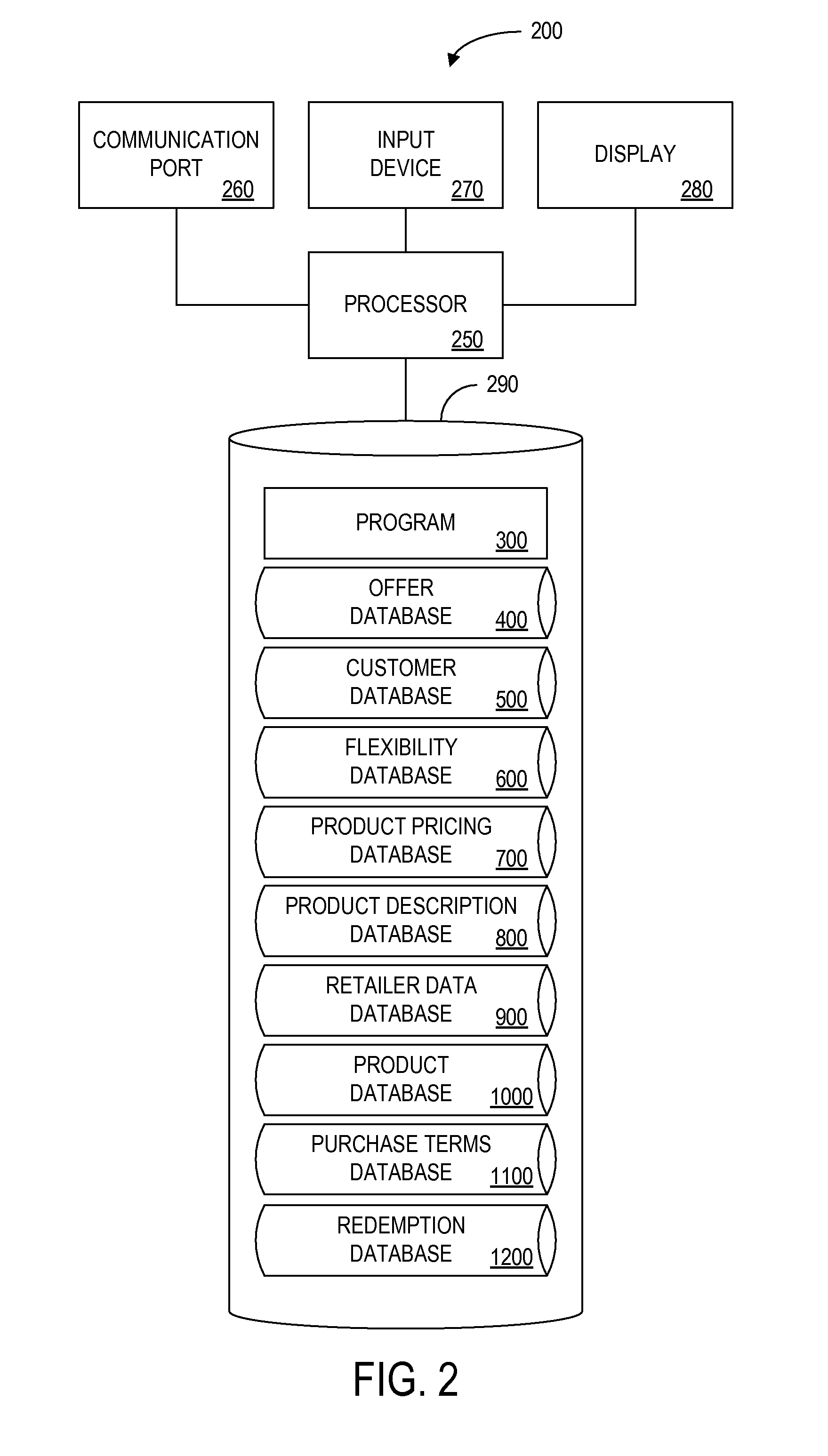Retail system for selling products based on a flexible product description
a technology of flexible product description and retail system, applied in the field of system for selling a product to a customer, to achieve the effect of optimizing profits, reducing prices, and efficiently charging different prices to different customers
- Summary
- Abstract
- Description
- Claims
- Application Information
AI Technical Summary
Benefits of technology
Problems solved by technology
Method used
Image
Examples
Embodiment Construction
[0052] To ensure clarity of the following detailed description, set forth below are definitions of terms used herein. The scope of the present invention is not to be deemed limited by the definitions.
[0053] Condition: a category of values which are descriptive of a product (see definition below) and / or a transaction. Examples include Manufacturer, Features, and Pickup Location.
[0054] Condition value: a specific value corresponding to a condition. Using the above examples of conditions, corresponding condition values may be “Sony”, “27 in.”, and “New York”.
[0055] Conforming product: a specific product deemed to meet the requirements of a product description or a sale price.
[0056] Customer: any person, group of people, or other entity that patronizes a retailer (see definition below) and who purchases products from the retailer.
[0057] Mutually-exclusive condition: a condition, such as Manufacturer, for which a conforming product possesses only one condition value. In order for a ...
PUM
 Login to View More
Login to View More Abstract
Description
Claims
Application Information
 Login to View More
Login to View More - R&D
- Intellectual Property
- Life Sciences
- Materials
- Tech Scout
- Unparalleled Data Quality
- Higher Quality Content
- 60% Fewer Hallucinations
Browse by: Latest US Patents, China's latest patents, Technical Efficacy Thesaurus, Application Domain, Technology Topic, Popular Technical Reports.
© 2025 PatSnap. All rights reserved.Legal|Privacy policy|Modern Slavery Act Transparency Statement|Sitemap|About US| Contact US: help@patsnap.com



